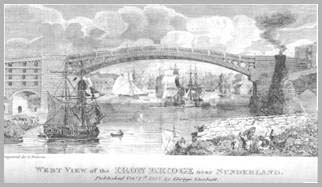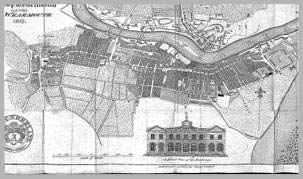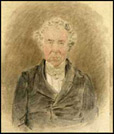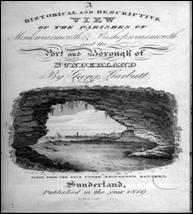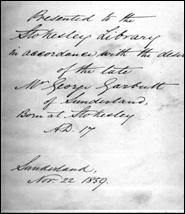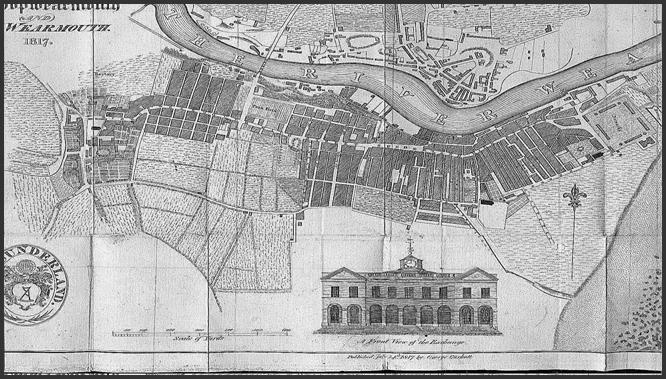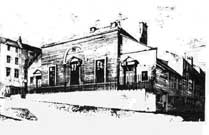
| | HOME | |
|
|
|
THE CHAPTER OF STRICT BENEVOLENCEThis web site has been developed for a variety of reasons not the least of which is to express the pride that our members take in the fact that this Chapter of Strict Benevolence is still vital and strong after more than 200 years of very colourful existence. We have 62 members drawn mainly from nearby Sunderland lodges and we work in a very friendly and relaxed atmosphere without detracting in any way from the quality of our work. We, like all other private chapters on the register, are governed by the Supreme Grand Chapter of Royal Arch Masons of England which is usually referred to as ‘The Grand Chapter’. Under this supreme body there are provincial grand chapters established throughout the country. Chapter of strict benevolence is one of 71 private chapters currently active in the Provincial Grand Chapter of Durham. A SPLENDID MASONIC JOURNEYBecoming a member of a Royal Arch Chapter is to continue on that journey in ancient freemasonry starting when you join a craft lodge and become a master mason. We aim not only to attract masons to join a chapter such as ours to complete this journey, but also to convince non masons that we are not insular or inward looking, but part and parcel of the whole fabric of the region we live and work in. Active in a social sense with our neighbours, active in our charitable works and proud of any contribution we can make in the community generally whilst enjoying ourselves in the work we are happily committed to. We therefore extend a welcome to masons who are not already companions of the royal arch to read on, to look at the achievements and setbacks which previous members of this chapter have experienced and hopefully be convinced that a great part of their masonic life lies ahead of them and not behind them. We hope that the facts and images recorded here will make interesting and enjoyable reading to anyone who visits this site, freemason or not, because it is the history of a real journey, a continuing journey, started in 1797 in what was then the port of Sunderland and what is now just the east end/ Hendon part of the greater city of Sunderland. Our roots, both civic and masonic lie here and we look forward to the restoration work needed to maintain, retain and widely proclaim the the splendid heritage of the old port of Sunderland and Bishopwearmouth. NEW FRIENDS
His account of Sunderland's history is well known to local historians and provides much information interesting to anyone but particularly those living in or connected to this city. He gives a wonderful masonic eulogy of a gentleman named Michael Scarth a truly remarkable man who was third partner with Rowland Burdon and Thomas Wilson in the building of the Sunderland Iron Bridge in 1796, and assisted Rowland Burdon in constructing the original A19 roadway. You can become better acquainted with him when reading the colourful history of this ancient chapter or if you wish you can 'click' on his name just above for the section devoted to his personal attainments. Garbutt also provides us with an excellent account of the lead up to the actual building of Sunderland's unique Iron Bridge by Rowland Burdon and the details of the planning and design work which can be found by visiting the comprehensive section on the Sunderland Iron Bridge. It is interesting to note that the book, in our possession at the moment, is his personal copy, signed by Garbutt and gifted, at his request, to Stokesley library by his family after his death (fig.2). Further research shows that George Garbutt was a member of Sea Captains' Lodge (now Palatine Lodge No.97) and that James Field Stanfield, also a member of the lodge, is said to have written the portions dealing with masonry and the theatre.
Fig.2 Left (Title Page) Right (Family Note) SUBSCRIBERSAmong the 350 subscribers to the publishing of this book we note some of international fame and some of purely local interest.
This enlarged plan of Sunderland, dated 1817, depicts very clearly the town as it would have been when this Chapter of Strict Benevolence was being formed in 1797 and helps to position items of interest such as Phoenix Hall, the barracks square, the gun battery (there to defend the port and town from french attack), the old town moor and importantly the unique cast iron bridge built by Rowland Burdon.
Fig.3 Plan of sunderland published by george garbutt and dated 1817. The most prominent feature on this old plan is the depiction of the frontage of the Exchange building, which is now, a grade 2 listed building known as the Quayside Exchange. After a complete restoration it now functions as a conference/ banqueting centre/ restaurant. Thankfully the whole area from the city centre to the old dock area is undergoing a far seeing development and restoration plan. Indeed it is remarkable how many good stone buildings we have in this area which are well worth the attention the city is giving to them. The barrack square can be clearly seen on the right side of the plan and just above the centre. The barracks were built in 1794 to billet over 1500 men and officers, with a hospital and stables for 10 horses. To the east of the barracks lay the battery under which the sketch was made shown on the title page in fig.2. This battery on the south side of the port had 6 x 24 pounders whilst the north side had 4 x 24 pounders denoting the importance of the port of sunderland whose coal trade was now very significant.the french navy was very active at this time with the intention of disrupting this and other trade. ORPHANAGEA boys' orphanage was established on the edge of the town moor in the 1840s. It is said that for training purposes there was a fully rigged ship set up near the grounds. Presumably this was known by the locals as "the ship on the moor" As a further nautical touch the perimiter railings were tipped with replica anchors and the boys wore a prescribed naval style uniform and lived in a fairly strict regime. It seems that several rose to become captains of real ships in later life, and who knows, possibly became members of Phoenix or Sea Captains Lodge.
IRON BRIDGEThe unique iron bridge is the well marked crossing between the words "the - river wear". Just to the north west of this unique iron bridge plans were being made and drillings taking place to facilitate the sinking of Pemberton Main colliery which started in 1826. But now this old landmark of the city, with its winding gears such a familiar sight for generations of wearsiders, is gone whilst this chapter, coping with each new challenge as it appears, is still going strong. MASONIC TEMPLEWe trust these physical landmarks of the past and present in this old part of Sunderland, and the many characters of the time, set the scene and give a sense of perspective of how the city of Sunderland has grown and changed in 200 years and how the Chapter of Strict Benevolence has adapted and survived and yet retained its essential aims and tenets. If you look once again, at Garbutt's plan of Sunderland, and find the 2nd letter 'r' in the word 'river', move your gaze south, past the buildings on the river bank, cross over the high street and a little further south and you arrive at the approximate position of Queen Street Masonic Temple or Phoenix Hall as it was known in those days. It is in this Masonic Temple that Chapter of Strict Benevolence was formed with masons from Phoenix Lodge, no 121 and Sea Captains Lodge no 144 joining together to form a chapter which is still strong and active after more than two hundred years of existence.
The Architect was Mr John Bonner. (THE BUILDINGS OF ENGLAND - Durham, p455) The first stone was laid on 5th august 1784 by Dr Tipping Brown who also wrote the ode which was performed by the whole musical strength of Durham cathedral at the dedication service held in the church on 5th April 1785.
|
Approved by the United Grand Lodge of England | Legal Notice


